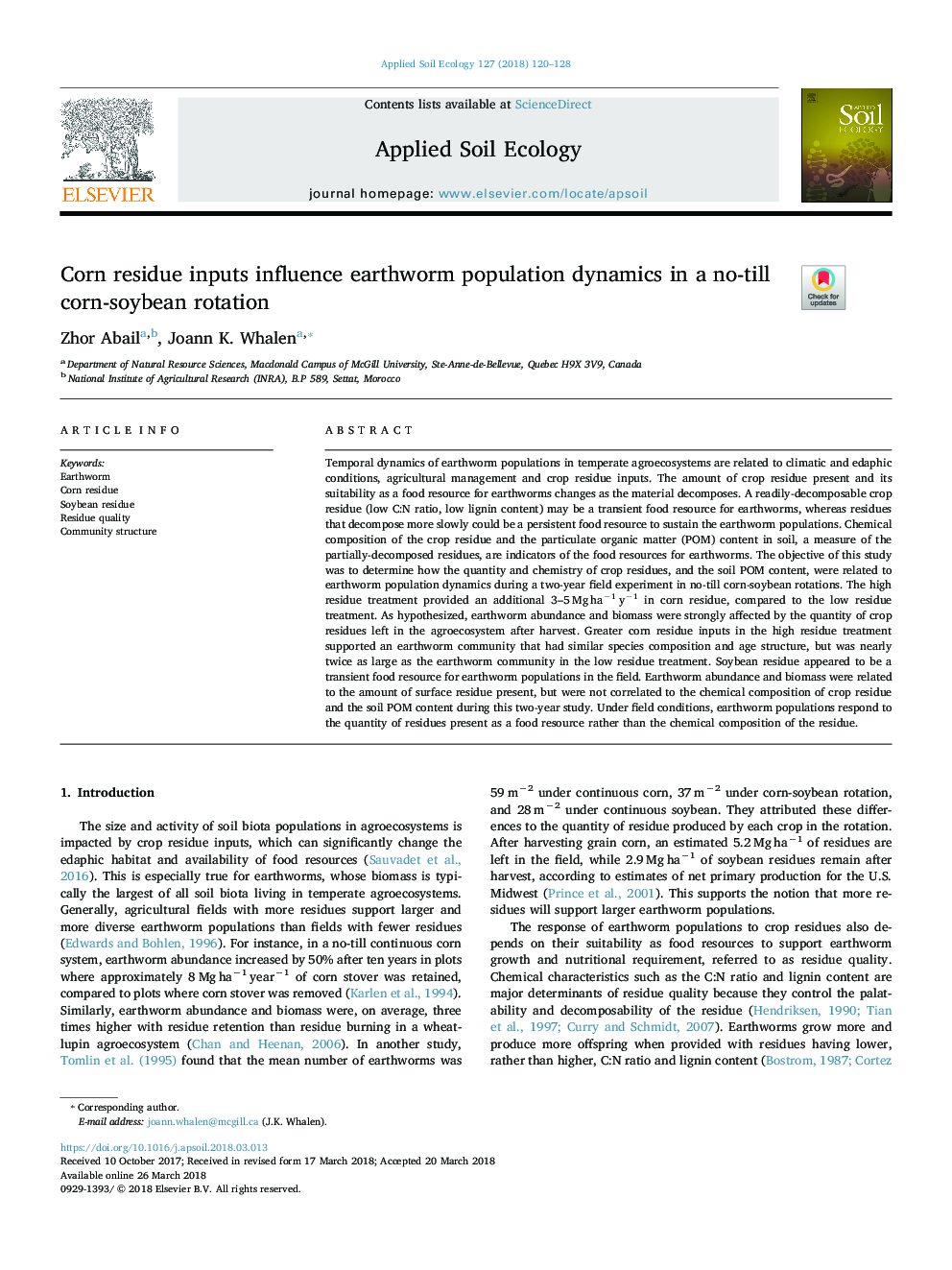| کد مقاله | کد نشریه | سال انتشار | مقاله انگلیسی | نسخه تمام متن |
|---|---|---|---|---|
| 8846653 | 1617756 | 2018 | 9 صفحه PDF | دانلود رایگان |
عنوان انگلیسی مقاله ISI
Corn residue inputs influence earthworm population dynamics in a no-till corn-soybean rotation
ترجمه فارسی عنوان
ورودی های باقیمانده دانه ذرت در پوسته شدن ذرت و سویا تاثیر می گذارد
دانلود مقاله + سفارش ترجمه
دانلود مقاله ISI انگلیسی
رایگان برای ایرانیان
کلمات کلیدی
کرم خاکی، بقایای ذرت، باقی مانده سویا، کیفیت باقی مانده ساختار جامعه،
موضوعات مرتبط
علوم زیستی و بیوفناوری
علوم کشاورزی و بیولوژیک
بوم شناسی، تکامل، رفتار و سامانه شناسی
چکیده انگلیسی
Temporal dynamics of earthworm populations in temperate agroecosystems are related to climatic and edaphic conditions, agricultural management and crop residue inputs. The amount of crop residue present and its suitability as a food resource for earthworms changes as the material decomposes. A readily-decomposable crop residue (low C:N ratio, low lignin content) may be a transient food resource for earthworms, whereas residues that decompose more slowly could be a persistent food resource to sustain the earthworm populations. Chemical composition of the crop residue and the particulate organic matter (POM) content in soil, a measure of the partially-decomposed residues, are indicators of the food resources for earthworms. The objective of this study was to determine how the quantity and chemistry of crop residues, and the soil POM content, were related to earthworm population dynamics during a two-year field experiment in no-till corn-soybean rotations. The high residue treatment provided an additional 3-5â¯Mgâ¯haâ1â¯yâ1 in corn residue, compared to the low residue treatment. As hypothesized, earthworm abundance and biomass were strongly affected by the quantity of crop residues left in the agroecosystem after harvest. Greater corn residue inputs in the high residue treatment supported an earthworm community that had similar species composition and age structure, but was nearly twice as large as the earthworm community in the low residue treatment. Soybean residue appeared to be a transient food resource for earthworm populations in the field. Earthworm abundance and biomass were related to the amount of surface residue present, but were not correlated to the chemical composition of crop residue and the soil POM content during this two-year study. Under field conditions, earthworm populations respond to the quantity of residues present as a food resource rather than the chemical composition of the residue.
ناشر
Database: Elsevier - ScienceDirect (ساینس دایرکت)
Journal: Applied Soil Ecology - Volume 127, June 2018, Pages 120-128
Journal: Applied Soil Ecology - Volume 127, June 2018, Pages 120-128
نویسندگان
Zhor Abail, Joann K. Whalen,
